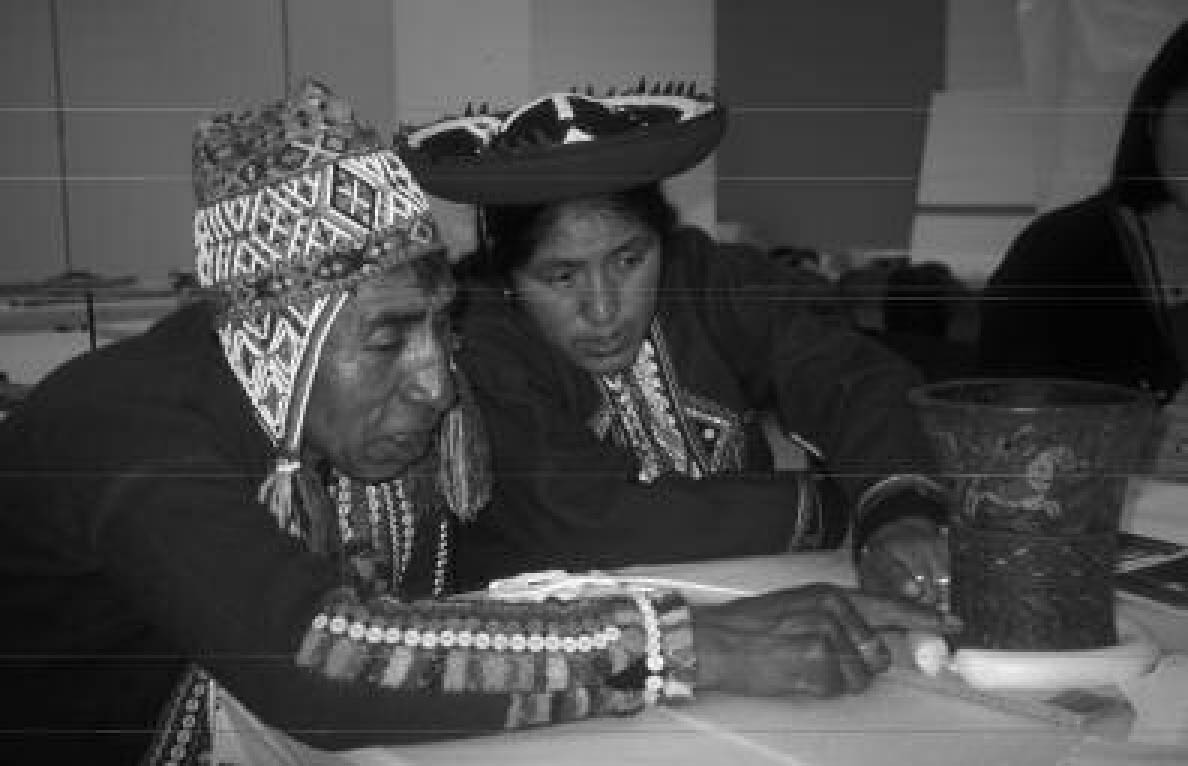PRACTICAL ASPECTS OF CONSULTATION WITH COMMUNITIESJESSICA S. JOHNSON, SUSAN HEALD, KELLY MCHUGH, ELIZABETH BROWN, & MARIAN KAMINITZ
1 INTRODUCTIONThe National Museum of the American Indian (NMAI) opened its doors on the National Mall on September 21, 2004. Much of the conservation work for three of the major inaugural exhibits was guided by the direction of Native individuals representing their communities to inform the conservators on approaches to treatments. The three exhibits, “Our Universes,”“Our Peoples,” and “Our Lives,” illustrate NMAI's principle that Native communities are the authorities of their own philosophies, histories, and identities, respectively. These exhibitions were prepared through partnerships with representatives from twenty-four Native communities. In all stages from curatorial concept, through design to conservation treatment, NMAI staff members worked directly with Native people to develop and prepare these exhibits, and learned the history, usage, and proper care of the artifacts. The challenge for conservators (as throughout the museum) for this multi-year project was to balance institutional practices with the concerns of Native communities. At NMAI programming is consistently driven by its mission statement:“The National Museum of the American Indian is committed to advancing knowledge and understanding of the Native cultures of the Western Hemisphere, past, present and future, through partnership with Native people and others. The museum works to support the continuance of culture, traditional values and transitions in contemporary Native life.” (National Museum of the American Indian 2005). These ideas are not limited to indigenous collections. Museums and many other kinds of cultural resources management entities are currently developing methods and approaches that incorporate the ideas and concerns of local or descendent communities who have a stake in the preservation and use of the resources. The community consultation work of the NMAI Conservation Unit fits within the continuum of change moving throughout conservation and museums and has been actively addressed at conservation conferences (e.g. Barclay et al. 1988, Spirydowicz 1992, AIC 1992, Roy and Smith 1994, Canadian Association for Conservation of Cultural Property 1998) and in a number of publications (e.g. Smith 1993; Drumheller and Kaminitz 1994; Heikell et al. 1995; Odegaard 1996, 2000; Clavir 2002). In Reviews in Conservation, one author discusses how conservation theory has shifted from an idea of Truth (or one right way or ideal), towards the notion that the function, use or value of an object is what is being preserved (Vi�as 2002). Throughout conservation there is growing agreement that the people most directly affected by a conservation process, the stakeholders, should be part of the process used to make the decisions about care. NMAI very specifically identifies its primary constituency, the Native peoples of the Western Hemisphere, as its major stakeholders. Native communities who hold the knowledge and expertise are seen as the authorities to properly identify how objects should be cared for and conserved and are identified as the Museum's first-person voice (fig. 1) (Online Newshour 2004). Consultations with Native communities have been used to design and develop museum buildings, museum exhibits and interpretative programs, as well as to identify appropriate collections care methods in storage and to develop conservation treatment approaches and techniques (Bernstein 1992;West 1999). The intent of this paper is to share the experience of the NMAI conservation department in executing nineteen conservation consultations for the inaugural exhibitions that opened NMAI's new museum on the National Mall in September 2004. Although NMAI's conservation department had collaborated with several Native communities in the past, the museum's opening provided a unique opportunity to hold a number of consultations in a short period of time. Through this experience a number of practical techniques were developed that can be shared. However, the goal of this paper is not to present a recipe for how to hold a successful conservation consultation, or to provide numerous treatment details learned in the process, but to explain some of the logistics and provide practical information regarding what was learned through the specific experiences of preparing for the opening of the museum. Through this experience, perhaps the most important learning is that the consultations cannot be forced to conform to a methodology that can be used by all institutions hosting conservation consultations. A loose
Finally, this paper will supply few specific treatment and exhibit details from the consultations. While it is understood that it would be helpful to other conservators to provide detailed treatment methodologies, the information shared by consultants was generally provided only for use in this specific exhibition and would not be applicable in another situation. In some cases, conservation consultants signed a release that stated that the information they provided would only be used for the Mall exhibits. Some consultants did not provide full explanations for information they provided, because they felt it was not appropriate for conservators or other museum staff to know these details. What can be shared, however, is how the conservation department responded to the museum's implementation of its mission statement in the exhibit development process. It is hoped that other conservators can benefit from these experiences as they develop their own relationships with Native communities through a consultation process. |
